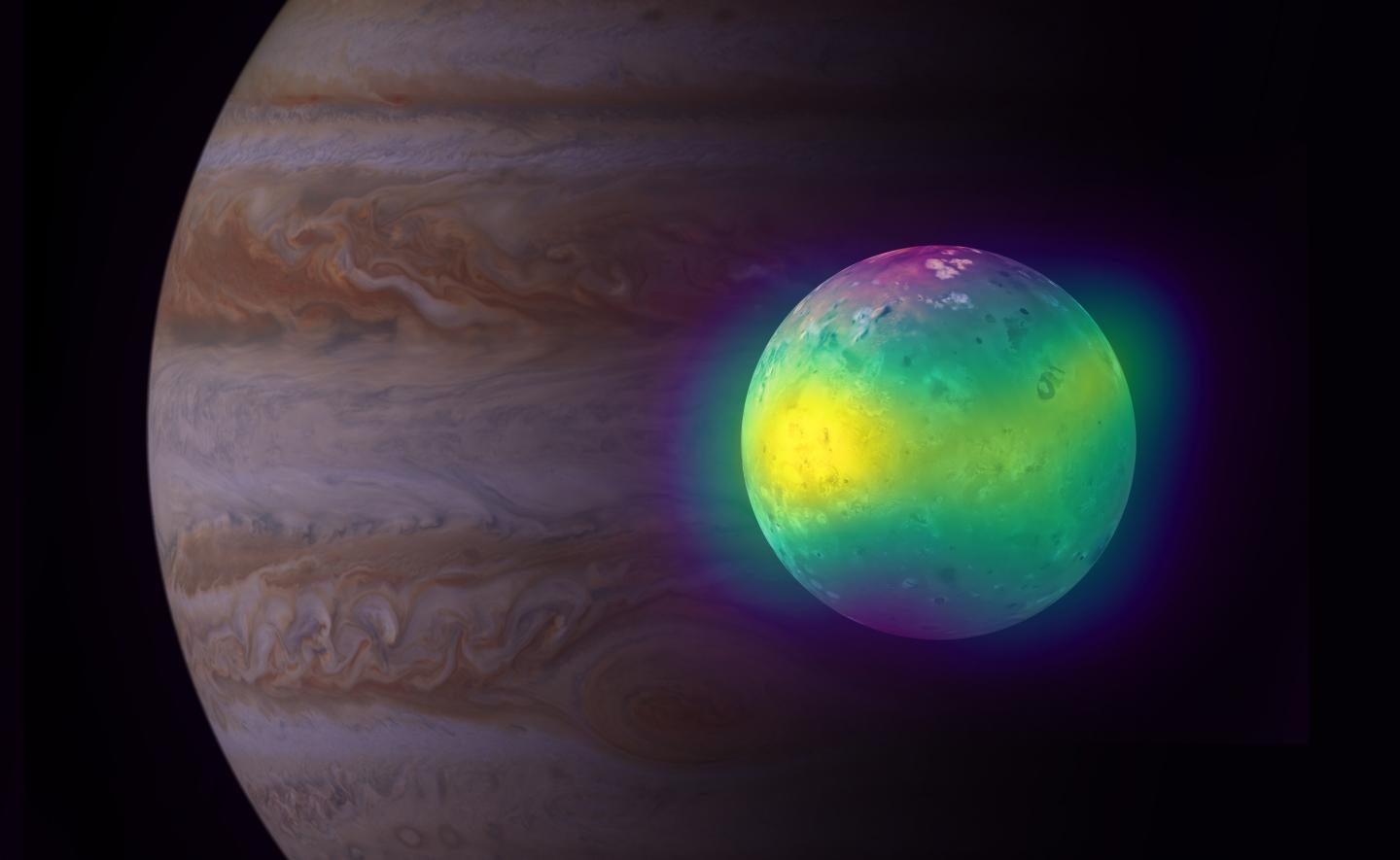New York, Oct 23 (IANS) Astronomers have for the first time observed direct effect of volcanic activity on the atmosphere of Jupiter's moon Io. To distinguish between the different processes that give rise to Io's atmosphere, a team of astronomers used Atacama Large Millimeter/submillimeter Array (ALMA) observatory in Chile to make snapshots of the moon when it passed in and out of Jupiter's shadow. "When Io passes into Jupiter's shadow, and is out of direct sunlight, it is too cold for sulfur dioxide gas, and it condenses onto Io's surface," explained Statia Luszcz-Cook from Columbia University, New York. "During that time we can only see volcanically-sourced sulfur dioxide. We can therefore see exactly how much of the atmosphere is impacted by volcanic activity." Thanks to ALMA's exquisite resolution and sensitivity, the astronomers could, for the first time, clearly see the plumes of sulfur dioxide (SO2) and sulfur monoxide (SO) rise up from the volcanoes. Based on the snapshots, they calculated that active volcanoes directly produce 30-50 per cent of Io's atmosphere. The ALMA images also showed a third gas coming out of volcanoes: potassium chloride (KCl). "We see KCl in volcanic regions where we do not see SO2 or SO," said Luszcz-Cook. "This is strong evidence that the magma reservoirs are different under different volcanoes." Io is volcanically active due to a process called tidal heating. Io orbits Jupiter in an orbit that is not quite circular and, like our Moon always faces the same side of Earth, so does the same side of Io always face Jupiter. The gravitational pull of Jupiter's other moons Europa and Ganymede causes tremendous amounts of internal friction and heat, giving rise to volcanoes such as Loki Patera, which spans more than 200 kilometres across.
Volcanic activity effect spotted on Jupiter's moon Io
- by Rinku
- October 23, 2020 2 minutes

Volcanic activity effect on Jupiter moon Io's atmosphere spotted.











